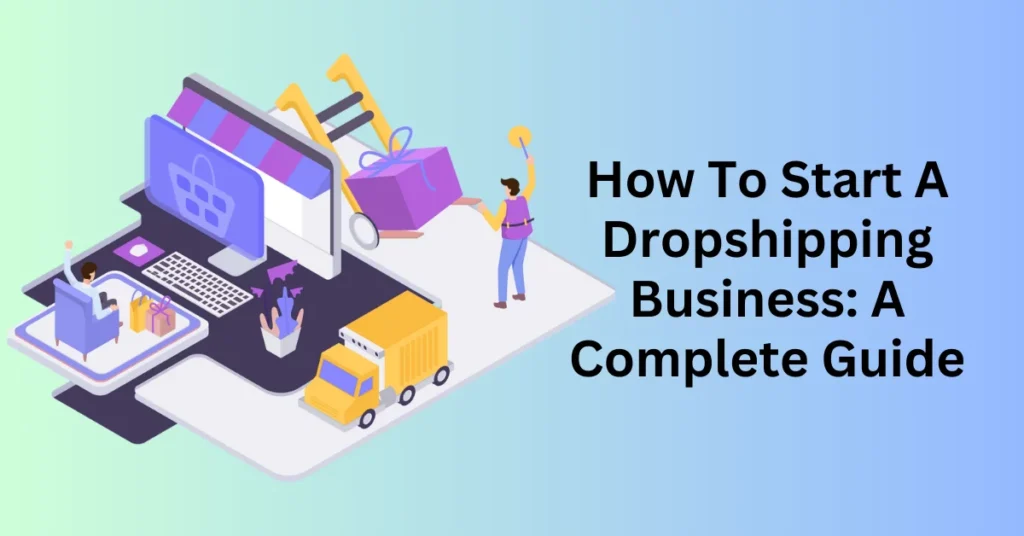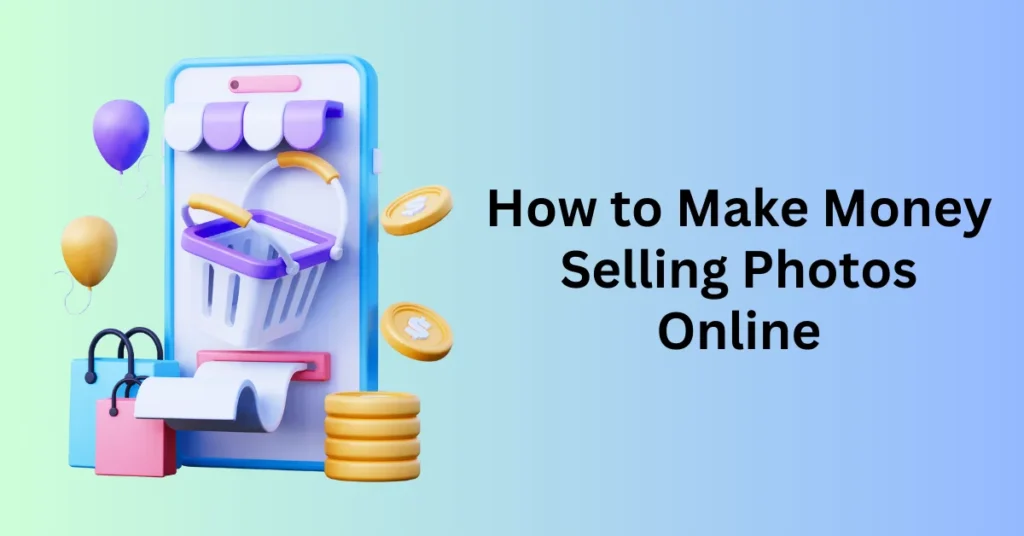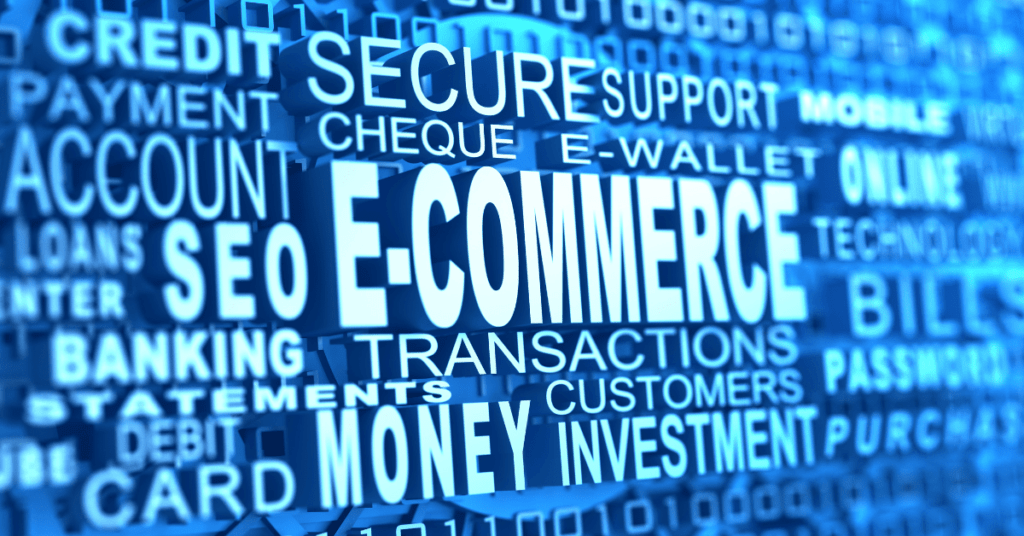Starting a dropshipping business can be an exciting and profitable venture, especially for those looking to dive into the world of e-commerce with minimal upfront investment. Unlike traditional retail models, dropshipping allows you to run an online store without the hassle of managing inventory or dealing with shipping logistics. Instead, you partner with suppliers who handle these aspects for you, letting you focus on growing your business and connecting with your customers.
In this comprehensive guide, we’ll walk you through the entire process of starting a dropshipping business, from choosing the right niche and finding reliable suppliers to setting up your online store and optimizing your marketing strategies. Whether you’re a complete beginner or looking to refine your approach, this guide is designed to provide you with actionable insights and practical tips to help you launch and scale your dropshipping venture successfully.
Start Your Dropshipping Business Today
What is Dropshipping?
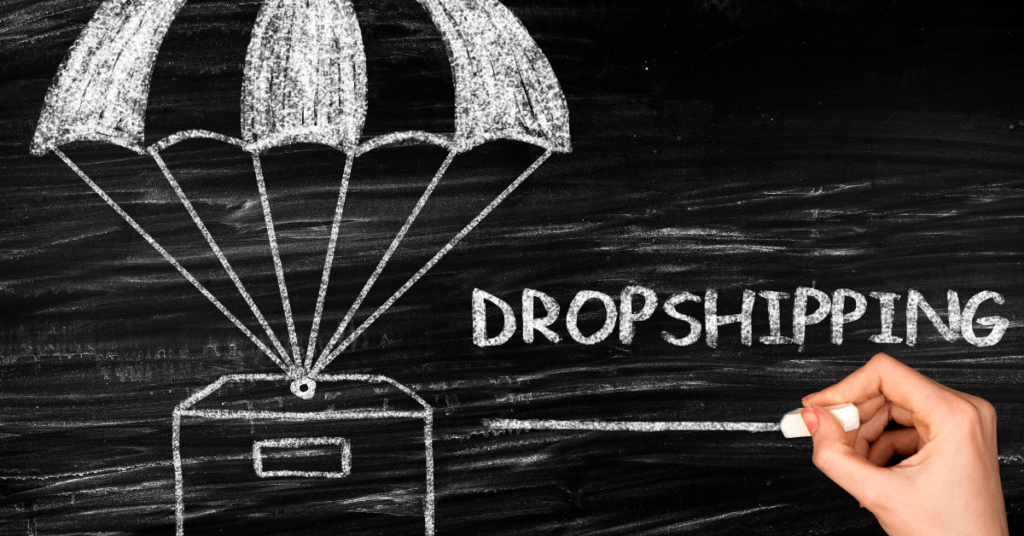
E-commerce is a dynamic business model that involves selling products or services online. It encompasses various strategies and fulfillment methods to deliver goods to customers. One popular fulfillment method within this model is dropshipping.
Dropshipping is a streamlined e-commerce fulfillment approach where you, as the store owner, do not handle or store any inventory yourself. Instead, when a customer places an order on your website, the order is automatically forwarded to a third-party supplier. This supplier is responsible for picking, packing, and shipping the product directly to the customer on your behalf.
This method offers several advantages, such as reduced upfront costs and minimal risk since you don’t need to invest in inventory. However, it’s crucial to understand that dropshipping is just one of many fulfillment options available within the e-commerce landscape.
Distinguishing between the business model of e-commerce and the fulfillment method of dropshipping is essential. The business model refers to the overall strategy of selling products online, while dropshipping is a specific way to manage the logistical side of this business model.
When aiming to build a successful e-commerce business, it’s important not to become overly attached to any single fulfillment method. Instead, focus on optimizing various aspects of your business, including customer experience, product selection, and marketing strategies. By keeping your approach flexible, you can adapt to changes and opportunities that may arise in the dynamic world of online retail.
Dropshipping Business Pros and Cons
Many business influencers on YouTube portray dropshipping as the ultimate solution for aspiring entrepreneurs looking to escape their 9-to-5 jobs, work from anywhere, and achieve a luxurious lifestyle. They paint an idealized picture of dropshipping as a hassle-free, risk-free path to success, often using it to promote their high-priced online courses. However, it’s important to understand that dropshipping, like any e-commerce fulfillment method, has both advantages and challenges.
Dropshipping Pros
- Low Upfront Investment: One of the biggest advantages of dropshipping is that you don’t need to invest heavily in inventory. You only pay for products after you’ve made a sale. This reduces financial risk significantly since you’re not left with unsold stock.
- Reduced Logistical Burden: Since your suppliers handle manufacturing, warehousing, and shipping, you don’t need to manage these aspects yourself. This means you can focus on other crucial areas like branding, marketing, and sales. While suppliers can handle returns, it’s generally recommended to manage returns yourself to maintain a good customer relationship.
- Ideal for Beginners: The low financial risk and logistical support from suppliers make dropshipping an attractive option for those new to e-commerce. It allows you to test the waters without a substantial financial commitment.
Dropshipping Cons
- Lack of Competitive Edge: One major downside of dropshipping is the absence of an economic moat—competitive advantages that protect your business from rivals. With dropshipping, it’s easy for others to start a similar business and sell the same products. This often leads to intense price competition and makes it challenging to stand out.
- High Competition: Since anyone can set up a dropshipping store, you might find yourself competing against countless other stores selling identical products. This can lead to a race to the bottom where price becomes the only differentiator.
- Consumer Savviness: Today’s consumers are increasingly tech-savvy. Many run reverse image searches to find suppliers directly, potentially leading to competition not just with other dropshippers but also with the suppliers themselves, especially if you’re sourcing from platforms like AliExpress.
- Limited Control: Because suppliers handle all logistics, you have little control over product quality, packaging, or customer experience. If customers receive products that don’t meet their expectations, they will hold you responsible, despite the fact that you don’t control the fulfillment process.
- Shipping Times: Many dropshipping suppliers are based in Asia, which can result in long shipping times for customers in Europe and North America. This can be a significant drawback in markets accustomed to fast delivery times, such as those offered by Amazon or local e-commerce stores. Customers may be discouraged if they have to wait weeks for their orders.
In conclusion, while dropshipping offers several advantages, such as low initial investment and reduced logistical responsibilities, it also presents notable challenges, including high competition and limited control over the customer experience. Understanding these realities can help you make a more informed decision about whether dropshipping is the right fulfillment method for your e-commerce business.
How Much You Need To Start Dropshipping Business
Many videos on YouTube suggest that it’s possible to start a dropshipping business with $0. While theoretically, this might be possible, the practical challenges are significant. Starting with an actual budget of $0 will likely lead to difficulties in making sales and establishing a successful business.
In theory, you could launch a dropshipping store with minimal upfront investment, especially since you don’t need to purchase inventory in advance. However, in practice, operating with a $0 budget presents major hurdles:
- Marketing and Advertising Costs: To attract customers to your dropshipping store, you’ll need to invest in marketing and advertising. This can include costs for running social media ads, search engine marketing, or influencer partnerships. Without a budget, you’ll struggle to effectively reach potential buyers.
- Website and Branding: Even if you use a low-cost or free website builder, you’ll still need to invest in a professional-looking design and branding to build credibility and attract customers. Free tools may limit your options and impact the quality of your store.
- Learning Curve: Dropshipping involves a learning curve, including mastering e-commerce platforms, understanding your target market, and optimizing your store for conversions. It may take 6-12 months to become proficient and start generating profit. During this period, you’ll need to cover expenses such as marketing, tools, and possibly small fees for essential services.
- Customer Service and Support: Handling customer inquiries and providing support can require tools and resources that are not free. Ensuring a positive customer experience often involves investing in customer service platforms or support tools.
If you’re in a desperate financial situation and need immediate income, dropshipping is not a quick fix. It’s a long-term business model that typically requires time to build momentum and generate profits.
How Much Can You Make With Dropshipping Business

Dropshipping profit margins generally range from 10% to 30%. This means that if your dropshipping business generates $1,000,000 in annual revenue, you can expect your profit to be between $100,000 and $300,000. However, it’s important to have realistic expectations about where your profit margins are likely to fall.
In practice, dropshipping profit margins are often closer to the lower end of this range, around 10%. This is largely due to the intense competition and lack of an economic moat inherent in the dropshipping model. Because many competitors offer the same products, it becomes challenging to charge premium prices. Customers can easily find similar items at lower prices, which forces you to lower your prices to remain competitive.
Despite these challenges, building a successful e-commerce business using dropshipping is entirely possible. With effective marketing, strategic planning, and a focus on delivering a superior customer experience, you can still achieve significant revenue. It’s feasible to create a dropshipping business that generates six or even seven figures in profit, provided you navigate the competitive landscape thoughtfully and strategically.
How To Build a Long-Term Dropshipping Business
Dropshipping can be an excellent entry point into e-commerce due to its low upfront investment and manageable logistical responsibilities. However, as we’ve discussed, this fulfillment method has significant drawbacks, particularly the lack of an economic moat. This lack of a competitive edge makes it challenging to maintain high-profit margins and differentiate your business from countless competitors offering similar products.
Because of these limitations, many successful dropshippers eventually transition away from dropshipping. They do this by collaborating with industrial designers to create unique products and finding reliable manufacturers to produce them. By gradually replacing their dropshipped offerings with private-label products, they gain greater control over their businesses.
Switching to private-label products allows entrepreneurs to build a stronger economic moat. It enables them to offer distinctive, high-quality items at premium prices, coupled with faster shipping times. This strategic shift not only enhances brand value but also improves profit margins and customer loyalty.
Ultimately, building a private-label e-commerce brand with the potential for a significant exit value should be a key goal from the beginning. By focusing on creating unique products and establishing a strong brand, you set yourself up for long-term success and the opportunity to sell your business for seven figures or more.
Start Your Dropshipping Business Today
How to Start a Dropshipping Business
Step 1: Choose an Industry
The dropshipping strategies often showcased on YouTube emphasize “winning products” and trend hopping. While it’s true that you can make money by capitalizing on temporary trends, this approach is not sustainable in the long run. Trend hopping involves chasing fleeting fads, like the fidget spinner craze of 2017. Early adopters of such trends did make substantial profits, but this revenue quickly evaporated as consumer interest shifted.
For those serious about building a lasting e-commerce brand, relying on these temporary arbitrage opportunities is generally a poor strategy. Most trends are short-lived, lasting only a few months, making it more prudent to focus on developing a business with enduring appeal. Instead of following trends, consider selecting an industry you are already familiar with and launching a store that caters to products with proven demand.
For instance, if you have a passion for hiking and camping, the outdoor clothing and gear industry could be an excellent choice. Your familiarity with this industry means you won’t need to learn everything from scratch. Being part of your target audience will help you create offers, marketing campaigns, and content that resonate more effectively with potential customers. Your enthusiasm for the outdoors will also provide the motivation needed to stay consistent and build traffic-generating assets.
While it’s theoretically possible to start a business in an unfamiliar, lucrative industry, doing so often lacks the advantages of choosing a field you are already knowledgeable about. Building an e-commerce brand is a long and challenging journey. However, having a genuine interest in your industry can make the process more manageable and enjoyable. Ask yourself if you’re prepared for your life to revolve around this industry for the next decade. This perspective will help clarify whether your chosen field aligns with your long-term goals.
Step 2: Pick Your Niche
Once you’ve selected your industry, the next step is to narrow your focus by choosing a specific demographic to cater to. This process of “niching down” involves honing in on a particular segment of the market, which can make it easier to establish and grow your business. Ideally, it would be best if you chose a demographic that you are personally connected to or passionate about.
For instance, if you are a female outdoor enthusiast, you might consider specializing in outdoor clothing and gear specifically for women. This targeted approach allows you to tailor your products, marketing, and messaging to a specific audience, making your efforts more effective and impactful.
By focusing on a narrower target audience, you can better address their unique needs and preferences. This focused strategy not only helps in creating more relevant offers and campaigns but also aids in building a loyal customer base. As you establish your brand and understand your niche better, you can gradually expand your target audience and product offerings.
Starting with a well-defined niche allows you to build a strong foundation, gain insights into your market, and refine your business approach. Over time, as you grow more comfortable and successful, you can explore broader markets and additional demographics.
Step 3: Build Your Online Store
Creating an online store is straightforward with ClickFunnels, even if you lack coding skills. You can start by selecting a store template and then customize it using the drag-and-drop website editor. This user-friendly approach allows you to set up your store efficiently without needing technical expertise.
When designing your store, keep Jakob’s Law in mind. This UX design principle states that users are accustomed to the way most websites function because they spend most of their time on other sites. Therefore, users expect your site to operate similarly to the other websites they frequent.
For example, if your online store specializes in outdoor clothing and gear, it should have a design and layout reminiscent of other popular stores in this niche. This doesn’t mean you should copy brands like REI or Patagonia outright, but taking inspiration from their design elements can be beneficial. By aligning your store’s appearance with familiar patterns, you enhance user experience and make it easier for customers to navigate and interact with your site.
Step 3: Add Products to Your Store
To streamline the process of finding and adding products to your store, ClickFunnels partnered with Zendrop. This platform simplifies product selection and integration, allowing you to focus on creating compelling offers.
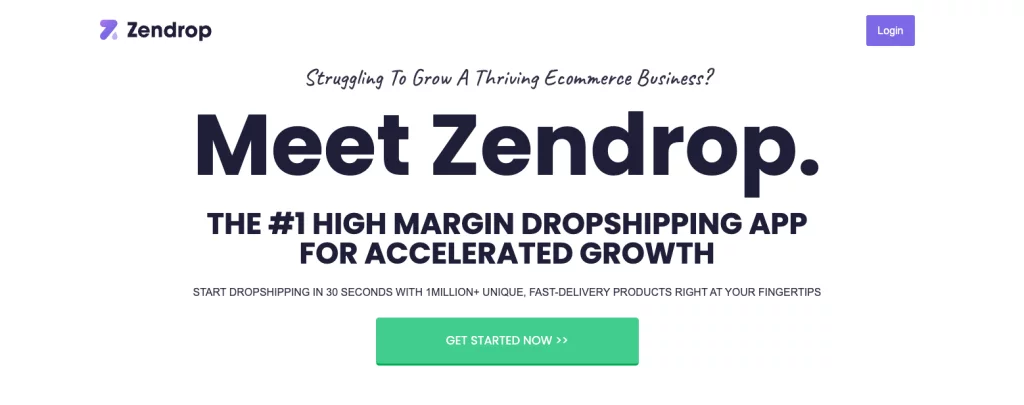
When building a successful e-commerce business, it’s crucial to frame your offerings as solutions to specific problems rather than just selling individual products. For instance, you might create a comprehensive list of items a beginner hiker needs for a short hike. Using Zendrop, you can find these products and add them to your store.
You can then bundle these items into a “day hike kit” and market it specifically to women who are new to hiking and seeking guidance on what to bring. By focusing on solutions, you not only offer value but also differentiate yourself from competitors who may simply sell unrelated products.
Apply the same approach to other categories, such as clothing and gear for longer hikes, camping trips, or different weather conditions. This problem-solving strategy helps you cater to specific needs within your target audience.
For the best results, consider ordering samples of the products you’re interested in and testing them. This will help you ensure quality and select the best options for your store.
Step 5: Build a Cart Funnel
With your products and bundles set up, the next step is to create a cart funnel. A cart funnel is an e-commerce sales funnel designed to guide potential customers through the purchasing process, ultimately converting them into paying buyers by highlighting your most appealing offers.

Since your store is newly established, you might not yet know which of your bundles will be the most popular. Start by selecting the bundle you believe has the highest potential and use it as the focus of your cart funnel. This will be the primary offer you promote to your target audience.
Once your cart funnel is set up, it’s time to drive traffic to it. Paid advertising is a powerful way to reach potential customers. Platforms like Facebook, Instagram, and TikTok offer robust ad options that can effectively target your desired audience.
Be prepared for a period of experimentation. Finding the winning offer, optimizing your cart funnel, and mastering profitable ad strategies may take some time. Track your results, analyze what works, and adjust your approach accordingly. Persistence is key—don’t get discouraged if things don’t work perfectly right away. With ongoing adjustments and testing, you’ll refine your funnel and improve your ad performance, paving the way for e-commerce success.
Start Your Dropshipping Business Today
How to Grow Your Dropshipping Business
Now that your dropshipping store is generating revenue, it’s time to focus on scaling and growing your business. Here’s a step-by-step approach to help you expand successfully:
1. Marketing and Optimization
Start by doubling down on the strategies that are currently yielding results. This might seem straightforward, but it’s often overlooked in favour of new, exciting ventures. For example, if paid ads are driving traffic to your cart funnel, consider increasing your ad spend strategically. Can you afford to 2x, 5x, or even 10x your budget while maintaining profitability?
Additionally, optimize your cart funnel through A/B testing to refine and enhance performance. Utilize tools that allow you to test different elements of your funnel and identify which variations convert best. Focus on scaling your existing successful customer acquisition channels before exploring new ones.
2. Paid Ads
Once you have a firm grasp of paid advertising on one platform, consider branching out to others. Major social media platforms like Facebook, Instagram, and TikTok offer advertising opportunities. Since you already know that your cart funnel works, your goal is to find profitable ways to drive traffic from these new platforms. Experiment with different ad formats and targeting options to maximize your reach and conversion rates.
3. Expand To Different Traffic Generation Methods
To reduce reliance on paid advertising and ensure long-term growth, invest in creating and nurturing traffic-generating assets. Consider the following:
- Social Media Following: Build a strong presence on platforms relevant to your niche. Engage with your audience and provide valuable content to grow your following.
- Email Newsletter: Develop a weekly newsletter to keep your audience engaged and informed. This is one of the most valuable assets for driving repeat business and maintaining customer relationships.
- YouTube Channel: Start a channel to create and share content related to your niche. This can drive significant traffic and establish your brand as an authority.
- TikTok Channel: Use TikTok to engage with a younger audience and create viral content that can boost brand visibility.
- Company Blog: Although SEO is highly competitive, a well-maintained blog with comprehensive guides and relevant content can drive organic traffic over time. Promote your blog content through your social media, newsletter, and other channels to enhance its reach.
Building these assets requires time and consistent effort, often taking several years to see substantial results. However, they will help you become less dependent on paid advertising and create a more sustainable and diverse traffic pipeline. Prioritize growing your email newsletter, as it’s the most valuable asset for direct communication and long-term customer engagement.
How to Scale Your Dropshipping Business
Once your online store is thriving, shifting from dropshipping to private-label e-commerce can elevate your business and provide greater control over your products and brand. Here’s a step-by-step guide to help you through this transition:
Step 1: Create Your Own Products
Transitioning to private labelling means you need unique product designs rather than repurposing dropshipped items. Start by hiring an industrial designer who can help you create custom products that surpass the quality of your current offerings.
Begin with your bestselling product. For example, if your top seller is a dropshipped hiking daypack, work with the designer to develop a superior version of this daypack.
This process involves several stages, including design iterations and extensive product testing. Use your existing customer base to your advantage by recruiting them as beta testers. Offer them free samples of the prototype and the final version of your private-label product in exchange for their honest feedback. People appreciate free products, so this approach should help you gather valuable insights.
Step 2: Find a Reliable Manufacturer
Decide whether to manufacture your products domestically or overseas. Both options come with their own advantages and challenges.
Visit potential manufacturers in person to evaluate their capabilities and ensure they can adhere to your design specifications. Order samples to verify the quality of their work.
Seek manufacturers with low minimum order quantities, especially during the testing phase, so you don’t overcommit. Be cautious of manufacturers offering unusually low prices, as they may engage in unethical practices. You want to ensure that your brand is associated with ethical production standards.
Step 3: Build Your Brand
The process of replacing all dropshipped products with your private-label items will be gradual and could span several years. Start by gradually introducing your new private-label products into your store while phasing out the dropshipped versions.
As you replace each product, ensure that your brand maintains consistent quality and messaging. This transition will eventually lead to a fully private-label e-commerce brand, giving you complete control over your products and brand identity.
Final Thoughts: How To Start A Dropshipping Business
As you embark on your dropshipping journey, remember that success in this dynamic business model comes from a blend of strategic planning, adaptability, and continuous learning. By carefully selecting your niche, partnering with reliable suppliers, and focusing on customer satisfaction, you set the foundation for a thriving e-commerce venture.
Throughout this guide, we’ve covered the essential steps to get your dropshipping business off the ground, but the real work begins once you start applying these strategies. Stay committed to refining your approach, experimenting with new tactics, and staying updated on industry trends.
Ultimately, dropshipping offers a flexible and low-risk way to enter the world of online retail, but it requires dedication and perseverance. With the right mindset and a proactive approach, you can build a successful dropshipping business and achieve your entrepreneurial goals. Good luck, and here’s to your success in the exciting world of e-commerce!
